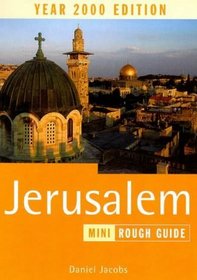Search -
The Rough Guide to Jerusalem
The Rough Guide to Jerusalem
Author:
Introduction Ten measures of beauty gave God to the world: nine to Jerusalem and one to the remainder Ten measures of sorrow gave God to the world: nine to Jerusalem and one to the remainder The Talmud, Kiddushin 49:2 Everybody has heard of Jerusalem (Yerushalayim in Hebrew, al-Quds in Arabic), and most people have some image of it in their... more »
Author:
Introduction Ten measures of beauty gave God to the world: nine to Jerusalem and one to the remainder Ten measures of sorrow gave God to the world: nine to Jerusalem and one to the remainder The Talmud, Kiddushin 49:2 Everybody has heard of Jerusalem (Yerushalayim in Hebrew, al-Quds in Arabic), and most people have some image of it in their... more »
ISBN-13: 9781858285795
ISBN-10: 1858285798
Publication Date: 1/10/2000
Pages: 384
Rating: ?
ISBN-10: 1858285798
Publication Date: 1/10/2000
Pages: 384
Rating: ?
0 stars, based on 0 rating
Publisher: Rough Guides Limited
Book Type: Paperback
Members Wishing: 0
Reviews: Amazon | Write a Review
Book Type: Paperback
Members Wishing: 0
Reviews: Amazon | Write a Review
Genres:
- Travel >> Middle East >> Israel >> General
- Travel >> Middle East >> Israel >> Jerusalem




